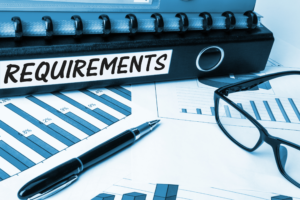
Challenges of Integrating AI to ALM/PLM Environments
As enterprises rush to adopt artificial intelligence solutions, a fundamental truth emerges: successful AI integration into Application Lifecycle Management (ALM) and Product Lifecycle Management (PLM) environments requires more than cutting-edge technology – it demands strategic alignment with specific organizational workflows and objectives. Real value emerges when AI is purpose-built to solve the right problems – at the right depth – specific to the enterprise. In the ALM and PLM domains, for example, coordination is critical – where cross-functional teams, often distributed across disciplines, departments, and tools, must align their efforts to ensure product safety and meet stringent regulatory requirements. How AI can improve ALM/PLM Operations By embedding AI into ALM/PLM tools and processes, organizations can build more robust systems with greater precision while ensuring real-time traceability and compliance. Key benefits of integrating AI and Agentic systems into ALM/PLM processes include: Efficiency: Automating manual processes significantly reduces effort in managing requirements, mechatronic components and design objects. Quality: Improves requirements clarity, eliminates redundancies, and ensures cross-system traceability. Speed: Accelerates development by bridging asynchronous workflows and automating validation. Intelligence: Identifies related requirements, suggests improvements, and alerts stakeholders to impacts across the process while enabling the establishment and enforcement of standards. AI-Driven Compliance as Strategic Advantage For automotive and medical device executives, AI integration in ALM/PLM isn’t just about efficiency – it’s a billion-dollar liability shield. Consider Tesla’s recent $137M settlement over Autopilot-related fatalities, where incomplete requirement traceability compounded legal exposure. AI-powered ALM/PLM transforms compliance from being a cost center to a strategic asset through: Risk Avoidance: Legal Defense: Real-time traceability matrices enable instant proof of regulatory compliance during litigation. Medical Device and Automotive Manufacturers spend hundreds of thousands of dollars every year to address compliance issues. AI reduces this burden while creating audit-ready documentation. Regulatory Compliance: Medical device companies face substantial costs for EUMDR 2017/745 compliance, with gap analysis alone costing €5,000-€50,000 and certification processes exceeding €100,000 depending on device classification. Despite these significant investments, market entry is not guaranteed. Products may be denied market access due to regulatory exceptions or failure to meet compliance requirements during formal audits. Regulatory Agility: When the EU MDR updated requirements in 2024, companies with robust systems adapted more efficiently to these complex changes, avoiding the high costs of non-compliance and recertification that can range from hundreds to tens of thousands of dollars. Immediate Productivity Gains: Automotive engineers can save substantial working hours weekly through AI-assisted requirement authoring and validation – translating to significant annual cost savings per engineer. Medical device teams could potentially reduce FDA submission preparation efforts by leveraging generative AI for documentation, potentially accelerating time-to-market for Class III devices by several months. The calculus changes even more when recognizing that AI-enhanced ALM/PLM systems don’t just automate workflows – they create institutional memory. When a parked vehicle’s autonomous system fails or an insulin pump faces FDA scrutiny, the ability to instantly trace every design decision back to specific regulatory clauses (ISO 26262, IEC 62304) transforms legal defense from reactive to proactive. Strategic Foundation: Defining AI Implementation Objectives Integrating AI and machine learning into exiting ALM/PLM systems offers substantial benefits – from automating repetitive tasks and improving decision-making to predicting development bottlenecks. However, realizing these benefits requires more than just technology; it demands strategic planning, technical expertise, and thoughtful process transformation to ensure successful implementation. The strategic integration of AI into ALM/PLM systems requires organizations to balance transformative potential with operational realities. Industry research identifies two foundational steps that precede successful implementation: Establish Domain-Specific Strategic Objectives AI initiatives must target high-impact areas aligned with regulatory demands and product lifecycle complexity. Examples from automotive and medical device sectors include: Automated Traceability Matrices: Implementing AI to maintain real-time links between ISO 26262 safety requirements and software verification artifacts, reducing manual traceability efforts by 60-80% in safety-critical systems. Regulatory Gap Detection: Training models to cross-reference FDA 21 CFR Part 11 requirements against design documents, automatically flagging incomplete electronic signature implementations in medical device submissions. Requirements Hierarchy Enforcement: Using NLP to validate requirement decomposition from high-level EU MDR directives to testable system specifications, ensuring vertical traceability across all V-model stages. Establish Systemic Integration Objectives Technical and organizational goals must be defined clearly across ALM/PLM ecosystems: Data Model Harmonization: Implement semantic mapping to bridge attributes of requirements from multiple ALM/PLM solutions, enabling comprehensive AI-driven impact analysis. Workflow Synchronization: Create AI-powered synchronization layers that align Agile and V-model processes to maintain consistent audit trails across disparate methodologies. Enterprise System Connectivity: Deploy hybrid AI architectures that seamlessly connect on-premise PLM instances with cloud-based ALM tools while ensuring robust IP security protocols. Technical Implementation Objectives Before AI integration, organizations should define specific technical requirements: System Architecture Objectives Map requirement hierarchies against ISO 29148 with quantifiable completeness metrics (95%+ coverage target) Establish baseline performance benchmarks for existing traceability matrices (query response time <500ms) Define maximum acceptable latency for AI-powered requirement validation (target: <2 seconds) Operational Capability Objectives Specify inference time requirements for real-time validation during authoring (<1 second per requirement) Define expected daily transaction volumes (e.g., 5,000+ requirements processed daily) Establish cost-per-requirement processing thresholds (<$0.01 per AI validation) Determine concurrent user capacity requirements (support 50-200 simultaneous users) Integration Infrastructure Objectives Define API throughput requirements for cross-platform data exchange (1000+ calls/minute) Establish data security classification schema for AI-processed requirements (confidential, restricted, public) Determine acceptable downtime windows for model retraining (<4 hours monthly) Specify maximum storage footprint for historical training data (keep last 18 months, <5TB) Organizational and Process Challenges Siloed Teams and Knowledge Fragmentation One of the most significant barriers to successful AI integration is the organizational separation between hardware engineers, software developers, data scientists, and business stakeholders. These functional silos create communication gaps and impede cross-disciplinary collaboration necessary for effective AI implementation. Knowledge becomes trapped in disconnected systems and documentation, making it difficult to build comprehensive AI solutions that span the entire product lifecycle. Requirements, design decisions, and rationales that could inform AI models remain isolated within team boundaries, limiting the potential value of AI applications. Resistance




